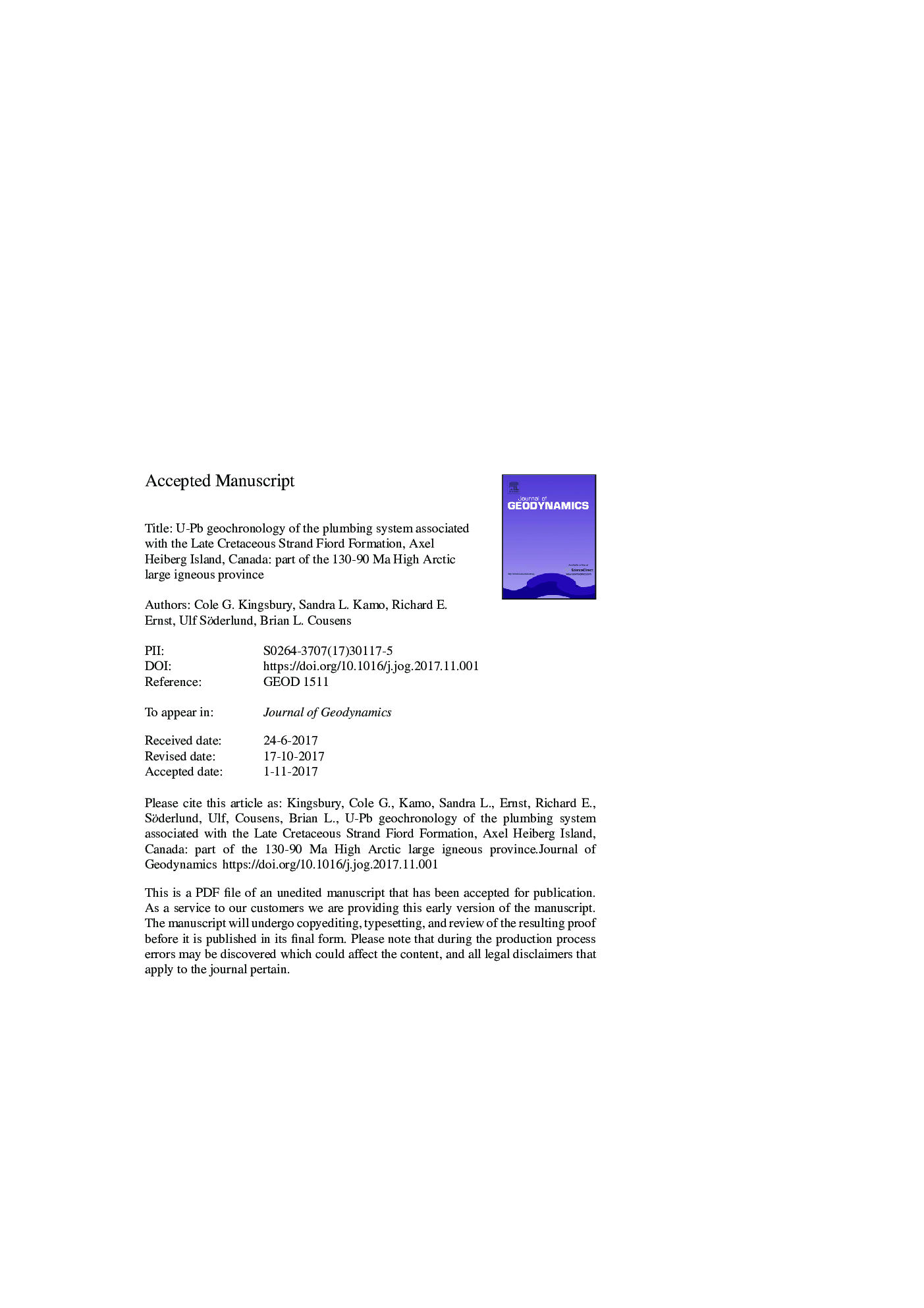| Article ID | Journal | Published Year | Pages | File Type |
|---|---|---|---|---|
| 8908397 | Journal of Geodynamics | 2018 | 45 Pages |
Abstract
The c. 130-90â¯Ma High Arctic Large Igneous Province (HALIP) greatly influenced the geological evolution of Canada's Arctic Islands along with formerly adjacent Svalbard (Norway), Franz Josef Land (Russia) and offshore regions such as the Alpha-Mendeleev Ridge. Three subalkaline tholeiitic pulses constitute the HALIP: (1) an initial two pulses at ca. 120-130 Ma in the Canadian portion are temporally associated with the Isachsen Formation basalts, and a later pulse at ca. 95-100 Ma fed extensive flood basalt lavas of the Strand Fiord Formation. Fieldwork at South Fiord on Axel Heiberg Island revealed a small network of sills and dykes. The U-Pb ID-TIMS baddeleyite age for diabase from a >10â¯m SSE-trending dyke (sample 13-CK-16) is 95.18â¯Â±â¯0.35â¯Ma (2Ï) and for a gabbro from a >50â¯m thick sill â¼7â¯km to the dyke's SW (sample 13-WJA-C028-A2) is 95.41â¯Â±â¯0.12â¯Ma (2Ï), identical within stated uncertainties. The two ages, in tandem with the similar geochemistry of the intrusions and Strand Fiord Formation lavas, provide the first precise age constraints for the feeder system of the Strand Fiord Formation which represents the younger pulse of HALIP. The two samples are distinct from each other in their Sm-Nd isotopic values suggesting they were derived from separate batches of magma that fed separate eruptive episodes.
Keywords
Related Topics
Physical Sciences and Engineering
Earth and Planetary Sciences
Earth-Surface Processes
Authors
Cole G. Kingsbury, Sandra L. Kamo, Richard E. Ernst, Ulf Söderlund, Brian L. Cousens,
